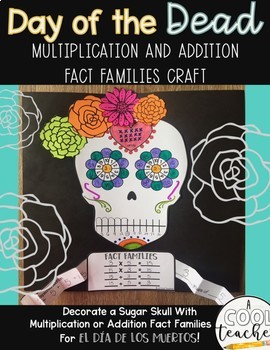Day of the Dead Multiplication and Addition Math Craft
- PDF
What educators are saying
Description
Celebrate El Dìa De Los Muertos with this beautiful multiplication craft! This project includes a sugar skull which students can decorate. Students will be able to apply their knowledge of multiplication strategies or addition/subtraction fact families to complete this festive craft.
Multiplication Strategies included:
- array
- fact families
- number line
- equal groups
- repeated addition
- multiplication wheel
Addition Strategies included:
- number bond
- fact families
- number line
- ten frame
- addition wheel
Included is a page with the sugar skull, upper body, and arms. A page with different flowers and shapes used to decorate their sugar skulls and a bulletin board banner which reads "Fact Families".
*****************************************************************************
Be the first to know about my new discounts, freebies and product launches:
• Look for the green star next to my store logo and click it to become a follower.
Thanks for the feedback ☺





